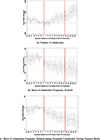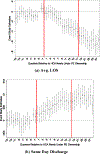Hospital behavior over the private equity life cycle
- PMID: 38861907
- PMCID: PMC11392649
- DOI: 10.1016/j.jhealeco.2024.102902
Hospital behavior over the private equity life cycle
Abstract
Private equity is an increasing presence in US healthcare, with unclear consequences. Leveraging unique data sources and difference-in-differences designs, we examine the largest private equity hospital takeover in history. The affected hospital chain sharply shifts its advertising strategy and pursues joint ventures with ambulatory surgery centers. Inpatient throughput is increased by allowing more patient transfers, and crucially, capturing more patients through the emergency department. The hospitals also manage shorter, less treatment-intensive stays for admitted patients. Outpatient surgical care volume declines, but remaining cases focus on higher complexity procedures. Importantly, behavior changes persist even after private equity divests.
Keywords: Hospital; Hospital outpatient care; Inpatient care; Private equity.
Copyright © 2024 Elsevier B.V. All rights reserved.
Conflict of interest statement
Declaration of competing interest None.
Figures



















References
-
- Agrawal Ashwini, and Tambe Prasanna. 2016. “Private Equity and Workers’ Career Paths: The Role of Technological Change.” Review of Financial Studies, 29 (9): 2455–2489.
-
- AHA. 2020. TrendWatch Chartbook. American Hospital Association. Available at https://www.aha.org/system/files/media/file/2020/10/TrendwatchChartbook-....
-
- Antoni Manfred, Maug Ernst, and Obernberger Stefan. 2019. “Private Equity and Human Capital Risk.” Journal of Financial Economics, 133 (3): 634–657.
-
- Appelbaum Eileen, and Bratt Rosemary. 2020. “Private Equity Buyouts in Healthcare: Who Wins, Who Loses?” Institute for New Economic Thinking Working Paper Series No. 118. Available at SSRN: https://ssrn.com/abstract=3593887.
-
- Bain & Company. 2022. “Global Healthcare Private Equity and M&A Report 2022. Available online: https://www.bain.com/globalassets/noindex/2022/bain_report_global_health....
MeSH terms
Grants and funding
LinkOut - more resources
Full Text Sources

